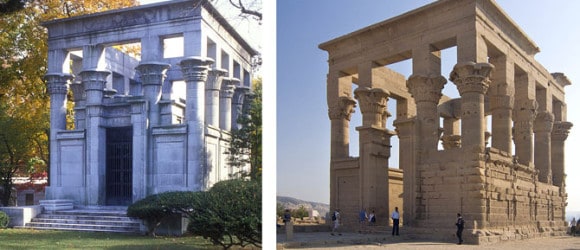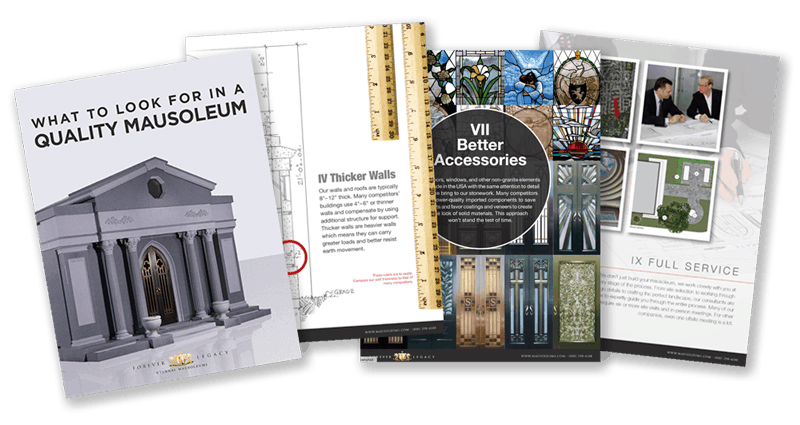Seeing Double: Bache Mausoleum borrows from Kiosk of Trajan

To coin a phrase, “if it works, don’t fix it.” The design of most mausoleums, like houses, is based on tried and true templates. And there are, of course, personal visions, one-of-a-kind mausoleums, that reflect the taste or whim of the designer or owner. There is a third inspiration for mausoleums: basing the design on existing buildings that may or may not be mausoleums. When designing a mausoleum, it is certainly worth considering using an existing building as inspiration. Indeed, if it works, don’t fix it.
Some replica mausoleums are virtually exact copies of the original, others are scaled down versions. Still others are adaptations or sympathetic renditions of the original.
In my travels I’ve seen mausoleums that are adaptations of the Great Pyramids of Giza, the Tower of the Winds and the Parthenon in Athens, Greece, the Pantheon in Rome, and Leonardo da Vinci’s mausoleum in Amboise, France. None is quite as unique as Julius Bache’s mausoleum in Woodlawn Cemetery, Bronx, New York that is a scaled-down version of the Kiosk of Trajan at the Temple of Isis in Egypt.
Bache made his living as a banker and stockbroker. He was a long time collector and patron of the arts and donated a number of Raphaels, Rembrandts, Titians, and others to the Detroit Institute of the Arts and the Metropolitan Museum of Art. In 1981, Bache & Co. was acquired by Prudential Financial, Inc. for $385 million, and is now known as Prudential Bache.
Bache’s Kiosk of Trajan replica mausoleum was designed by Davis, McGrath & Kiessling in 1916, and fabricated of Barre granite by Farrington Gould & Hoagland. The hallmarks of the Bache mausoleum are the 14 massive columns that are capped with abstractions of lotus blossoms, signifying the unfolding creative universe, and the open roof design. A winged solar disk, associated with divinity and royalty, is carved above the lintel. The winged sun is also symbolic of the soul. When placed above doors, it served as a reminder to visitors of the eternal nature of their souls. The landscaped lot was designed by Charles Wellford Leavitt in 1918. Leavitt’s original design was quite Spartan and meant to reflect the aridity of the Egyptian climate. The Bache mausoleum and its grounds were featured in a 1917 article in Architectural Review magazine on mausoleum architecture and in a 1921 article titled “Planting the Mausoleum Plot” in Park and Cemetery magazine. It also appeared in the “Portfolio of Current Architecture” in the May 1920 issue of Architectural Record and on covers of Park and Cemetery magazine in April, May, June, and July 1932.
Or call us at: (800) 298-4188

